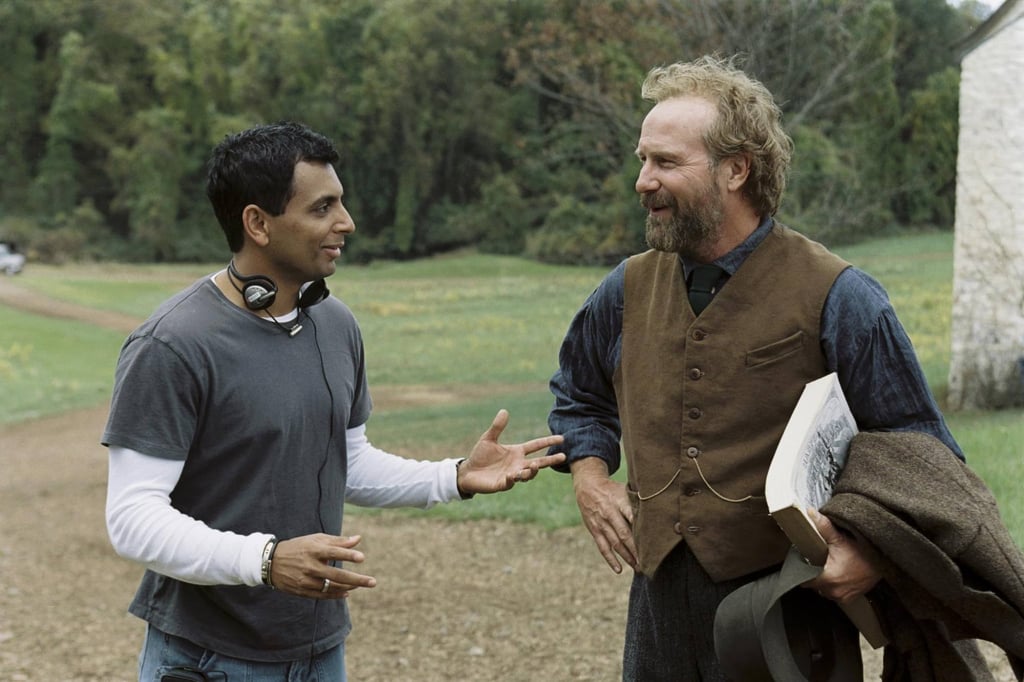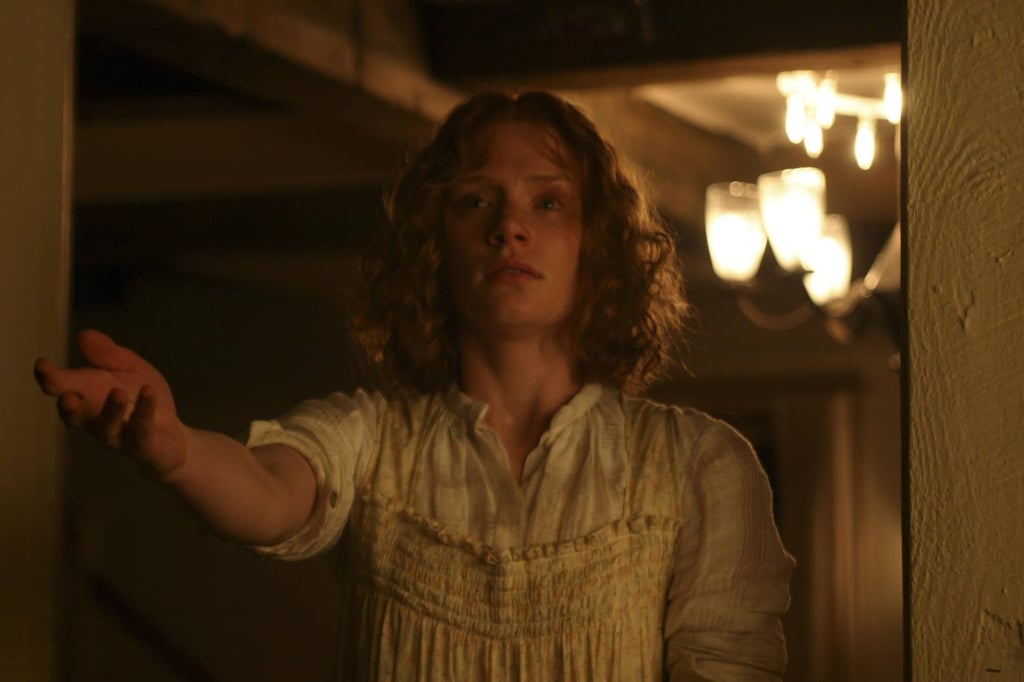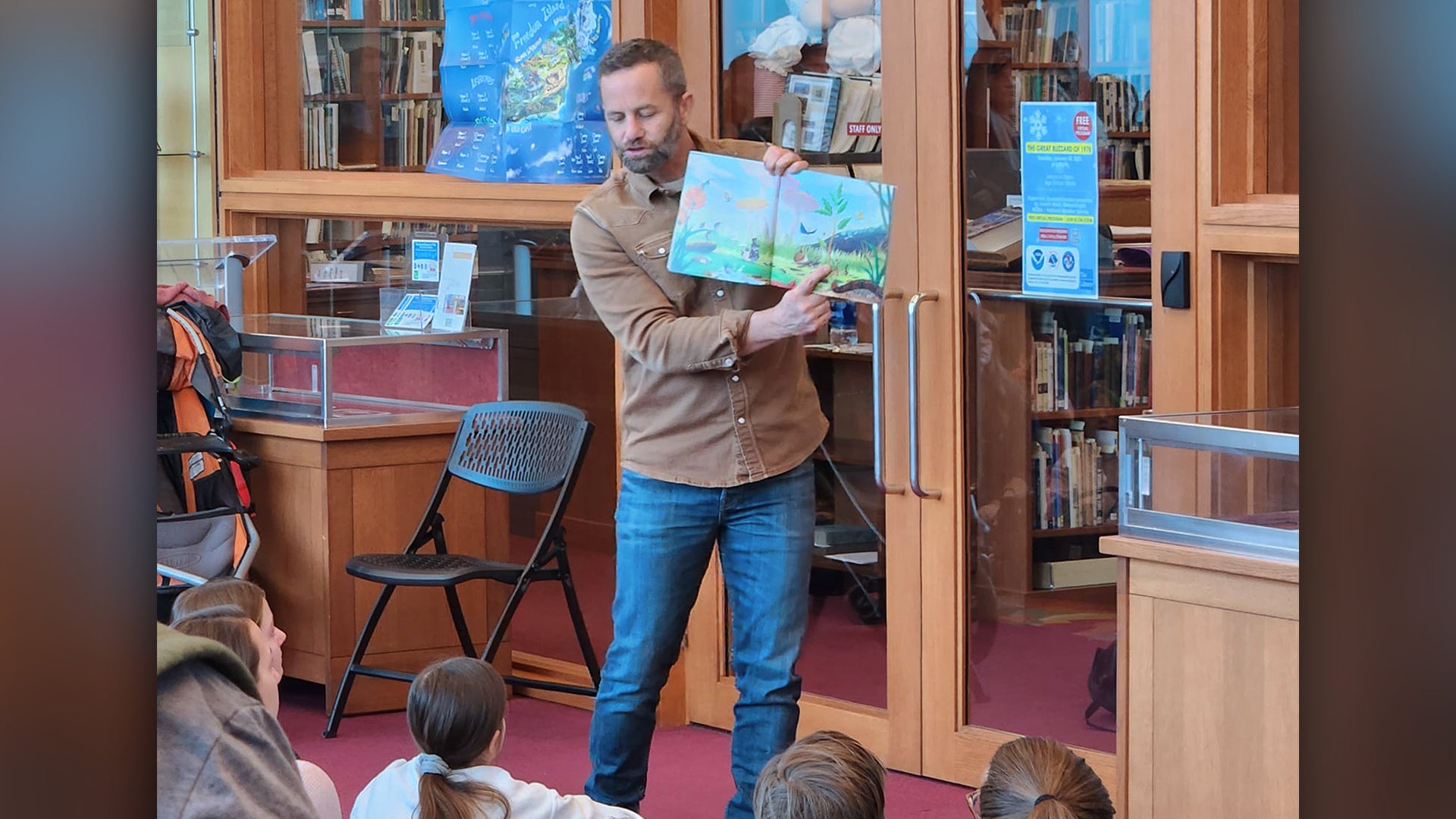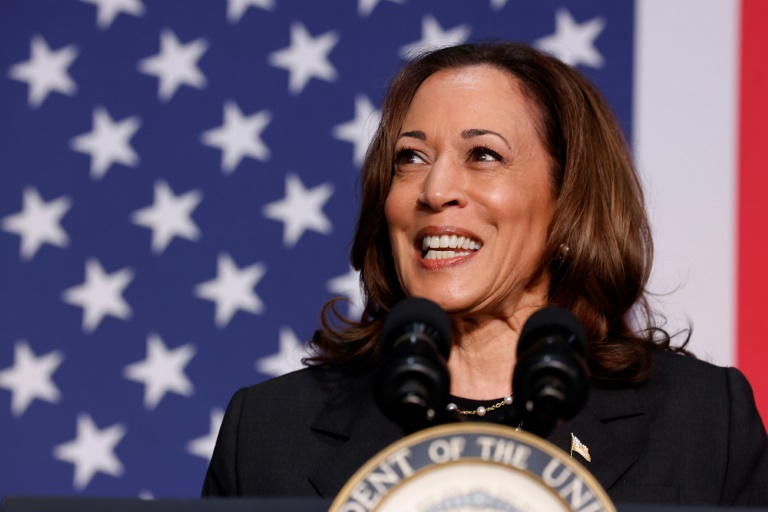In 1890s Pennsylvania, a small settlement keeps itself shut off from the rest of the world. Nobody enters the surrounding woods for fear of creatures known as Those We Don’t Speak Of, and the isolationist life is simple, if hard to sustain.
He wants to buy medicine to prevent more tragedies, and also, you sense, see the outside world. The elders refuse.
Because Ivy is blind, the elders believe she will not find out the truth: that the villagers live in the present and the community is a secure compound hidden away from the horrors of modern life, with guards patrolling the perimeters and a no-fly zone above.
Whatever you make of the story, there is no denying the craft. The cast, which also includes indie stalwarts Judy Greer (Adaptation) and Michael Pitt (The Dreamers), plus a young Jesse Eisenberg (The Social Network), is exceptional.
James Newton Howard’s Oscar-nominated score is suitably eerie, with pipes that mimic a hunter’s call combining with ever-nearing drums.
Roger Deakins’ cinematography, meanwhile, captures some memorably otherworldly imagery: the yellow-cloaked villagers lit by flickering flames, or Ivy standing in a sea of forbidden red berries.
As The Sixth Sense showed, Shyamalan has a knack for creating slyly spooky moments, such as when a creature is glimpsed just stepping out of the frame, or the heart-in-mouth sequence when Those We Don’t Speak Of attack the village.
In fact, the film remains creepy even after we realise the truth – that Those We Don’t Speak Of are the elders clad in red cloaks and animal claws – which is quite an achievement.

The climax, in which Ivy escapes from a creature (actually Noah) in the woods, is superbly realised. There is even a great Shyamalan cameo as the bored desk jockey – or director? – in charge of compound security.
Not everyone was convinced. American critic Roger Ebert called the film “a colossal miscalculation, a movie based on a premise that cannot support it, a premise so transparent it would be laughable were the movie not so deadly solemn”.
He is not totally off the mark. The pace is deathly slow, the dialogue – by necessity – stilted, and Brody’s performance as a character with learning difficulties would not pass today.
But it is also a Hollywood movie that is daring, original and completely sincere. And how often can you say that?

While the main twist may be guessable in itself, it shows everything we have seen in a new light, meaning that a second watch reveals a completely different film.
Taken at face value, the actions of the elders are understandable. Edward Walker recruited them from a grief counselling service, they have all lost loved ones to violent crime and are trying to make a better world for their children.
Yet the means by which they do so – hiding them away, curtailing their freedom, and inventing monsters to terrify them into submission – is unconscionable. It is the actions of a cult, not a commune.
If Shyamalan’s early films are about coming to terms with mortality – tortured souls in The Sixth Sense, damaged bodies in Unbreakable and shaken faith in Signs – this is his bleakest vision of all. Instead of taking their pain and turning it into something positive, the characters decide to invent monsters because they cannot deal with the real ones.

Like all risk-takers, Shyamalan would go on to make some fascinating films and some flawed ones. But The Village remains one of his very best.






